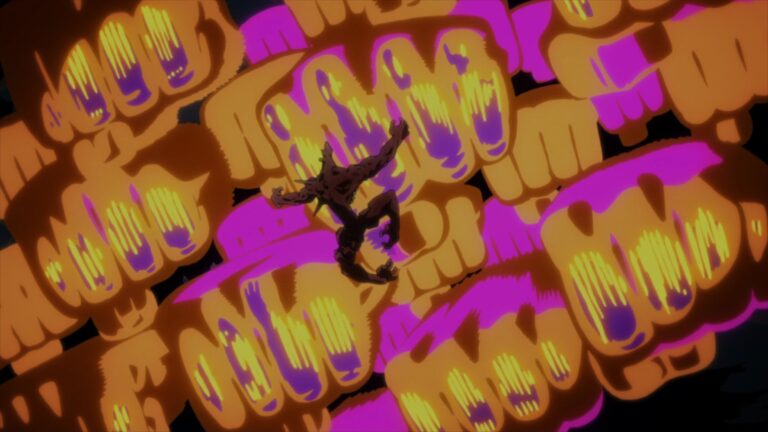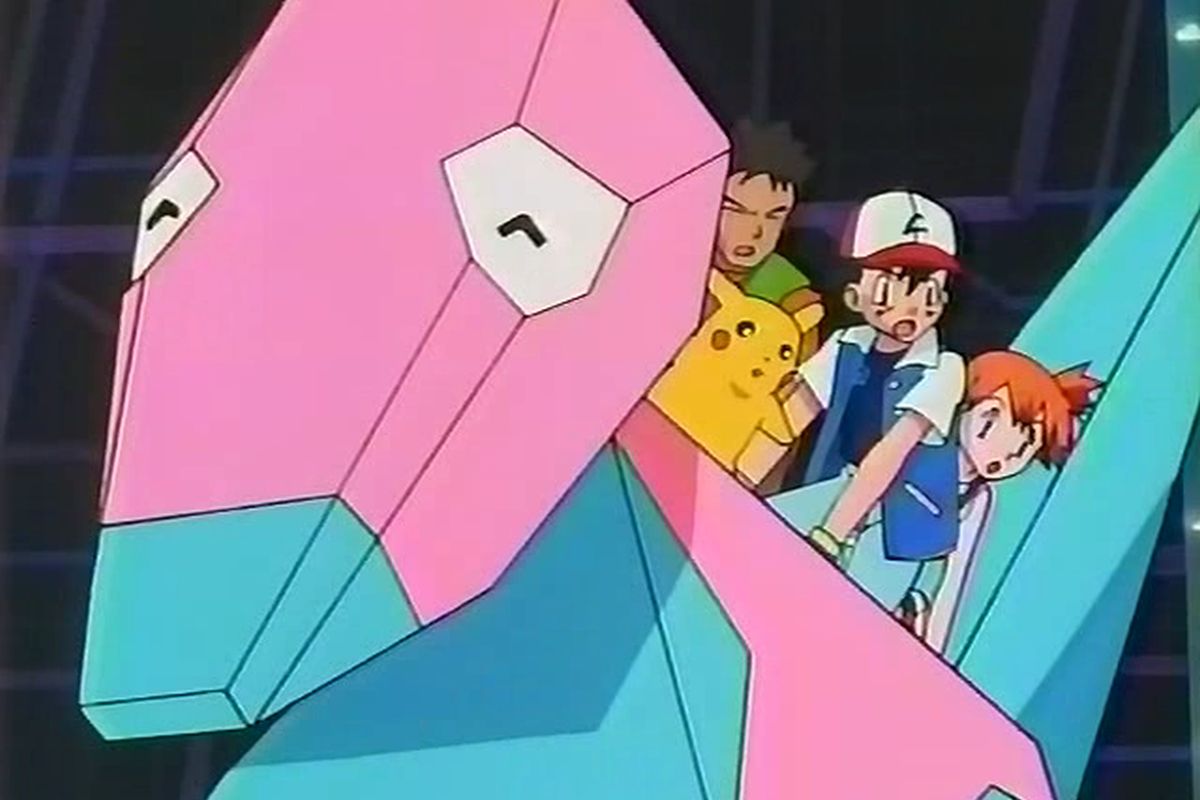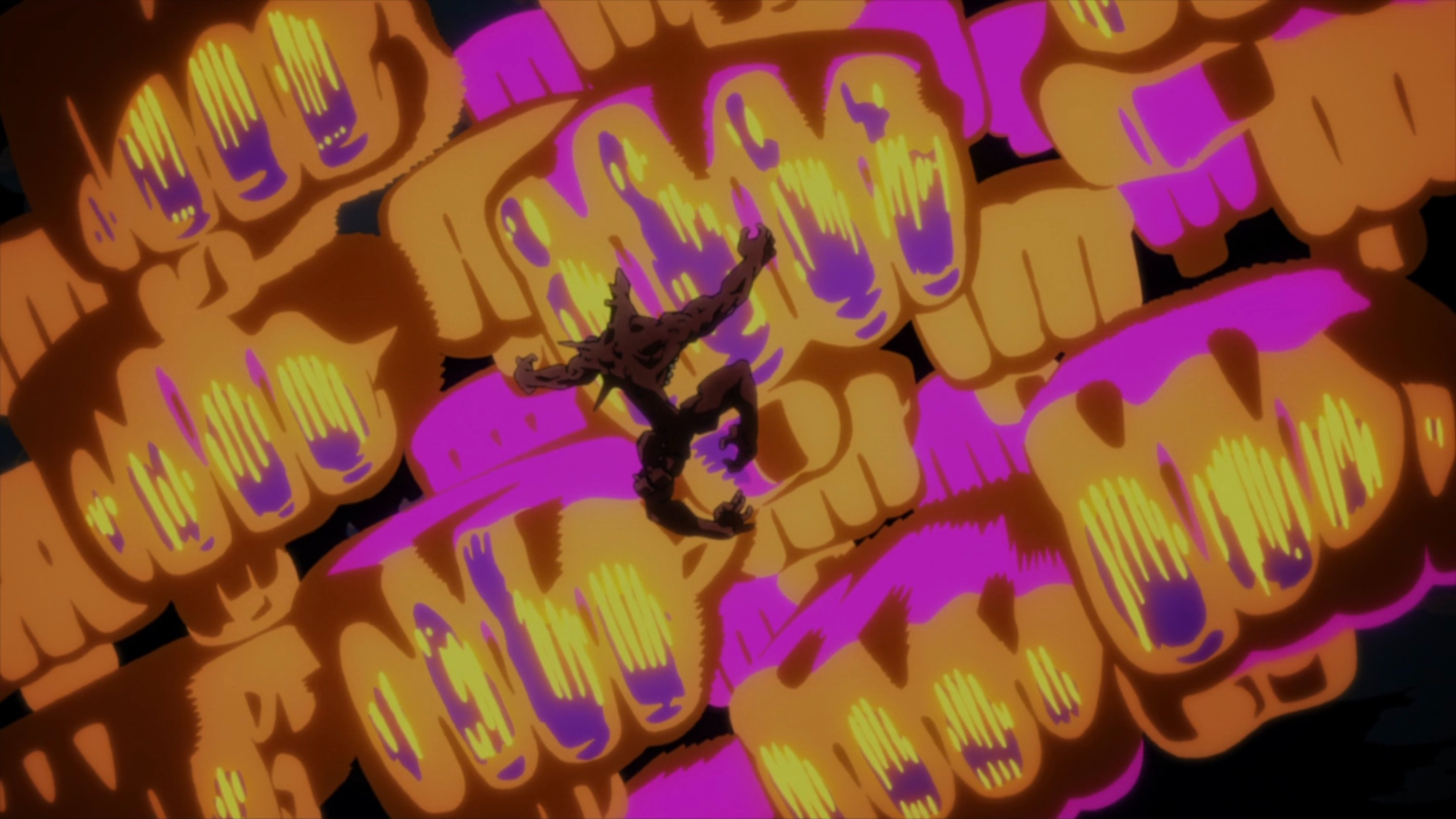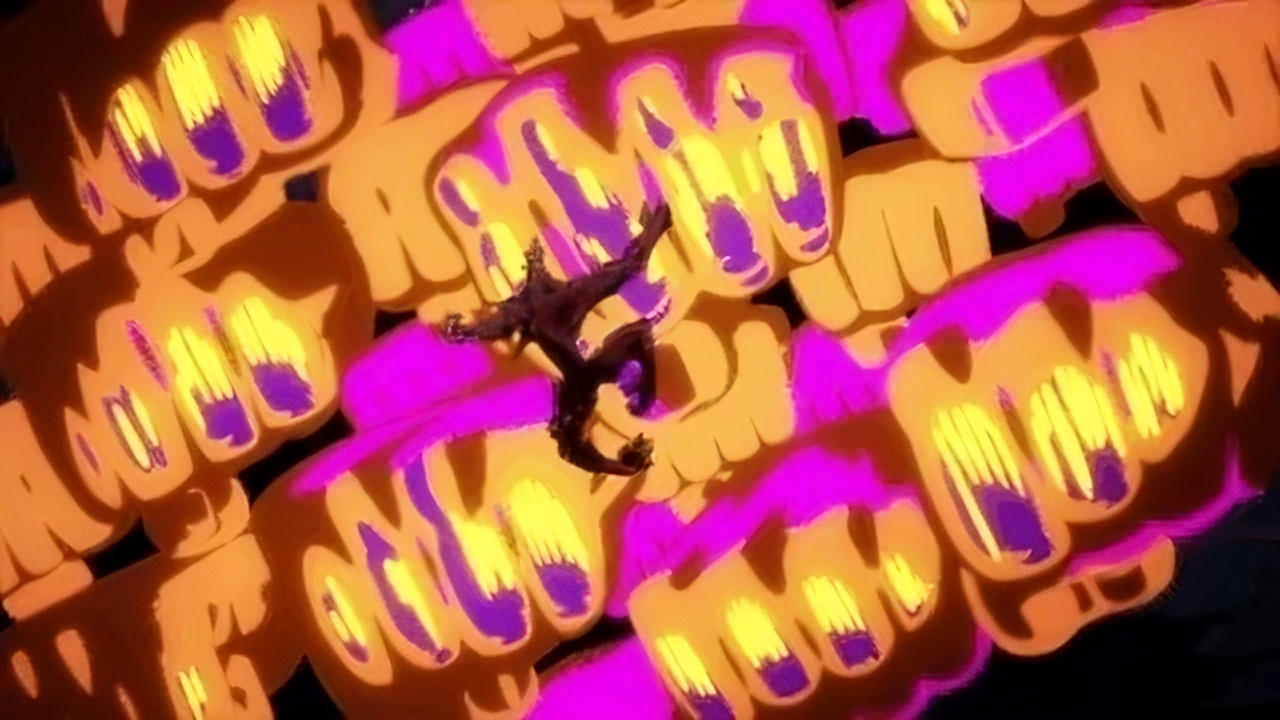Have you ever wondered why action-packed anime scenes sometimes appear dimmed, as though all the colors have been briefly faded out? A few moments later, everything’s back to the usual vibrance, and you’re left wondering what just happened. Fear not—there’s nothing wrong with your eyes, or your television, for that matter.
Anime dimming is there to protect you—and it all started back in 1997, with a now-infamous episode of Pokémon.
Electric Soldier Porygon
There’s a banned episode of Pokémon’s first season that aired just once, in Japan, and unexpectedly caused a significant amount of harm and general concern. The 38th episode of season one, titled Dennō Senshi Porygon, and commonly translated as “Electric Soldier Porygon,” aired on December 16, 1997.
During the episode, Ash and Pikachu are helped by the delightfully-duck-shaped cyber Pokémon, Porygon, in a strange cyberspace environment. There, Pikachu unleashes a thunder shock attack against missiles targeting the Porygon.
During that scene of Electric Soldier Porygon, the screen flashes red and blue at 12 Hz for roughly six seconds.
In the immediate minutes to hours that followed, nearly 700 children watching the program were taken to hospitals by ambulances, with epilepsy-based symptoms that ranged from blurred vision and headaches, through to convulsions and seizures. At least 150 of those children were hospitalized, and the incident caused waves amongst the Japanese press, where it was dubbed Pokémon Shokku (“Pokémon Shock”).
Pokémon went off-air for four months, and Electric Soldier Porygon was never broadcast in any country, ever again.
Anime Dimming
Following the Pokémon Shock incident, TV Tokyo and other Japanese TV broadcasters established a series of guidelines to prevent any future epileptic attacks. This included strict rules around flashing lights in animation, which is particularly susceptible to sudden changes in color from frame-to-frame. Content on Japanese TV and streaming sites would later become subjected to the Harding test, which limits flashing light to once every 10 frames at 29.97 frames-per-second.
Footage that doesn’t clear that test is instead subjected to a luminance filter that dims the colors to mitigate any potential epileptic events. You can see this in effect below, with a still frame taken from My Hero Academia Episode 76—on the left, the dimmed frame as it aired originally (and still the only version available via Crunchyroll), and on the right, the same frame available from the uncut Blu-ray release.
A Ghost of a Problem
Unfortunately, no good deed goes unpunished.
Anime dimming has often resulted in complaints online, as recently as the latest episodes of Jujutsu Kaisen, which generated numerous heated discussions online. Some fans suggested that the anime dimming “ruined the […] fight” in one episode, while others lamented that Crunchyroll didn’t receive an undimmed version to air overseas.
This isn’t studio MAPPA’s fault, of course—the laws are in place to protect viewers, both in Japan, and in foreign countries that receive broadcast rights. Broadcast laws vary per country, and every country has their own specifications for epilepsy prevention; to keep a timely reschedule for fans, streaming services typically air the Japanese version of the episode as soon as they receive it.
Some studios, such as ufotable, have employed innovative techniques to ensure that viewers receive an experience that’s as close to the original as intended. During the production of Demon Slayer: Kimetsu no Yaiba: Mugen Train, ufotable’s digital team engineered a lighting solution that, when run through the Harding test, resulted in an outcome extremely close to their original animation.
Red and Blu(ray)
Thankfully, there’s a simple, guaranteed solution if you don’t like having your animation dimmed.
The Blu-ray releases of anime will always have the dimming removed, since it’s only a requirement for TV broadcast, and not home video. This also applies to “ghosting,” which is another technique that draws additional after-images to prevent sharp cuts between individual frames.
So next time an episode of your favorite anime looks duller than normal, just remember that it’s all to protect innocent viewers from being exposed to an epileptic attack—and if nothing else, you can blame it all on one little Porygon from 1997!
© Nintendo / Creatures / GAME FREAK / Pokémon
© Koyoharu Gotoge / SHUEISHA / Aniplex / ufotable
© Kohei Horikoshi / SHUEISHA, “My Hero Academia” Production Committee




Participate In Discussions